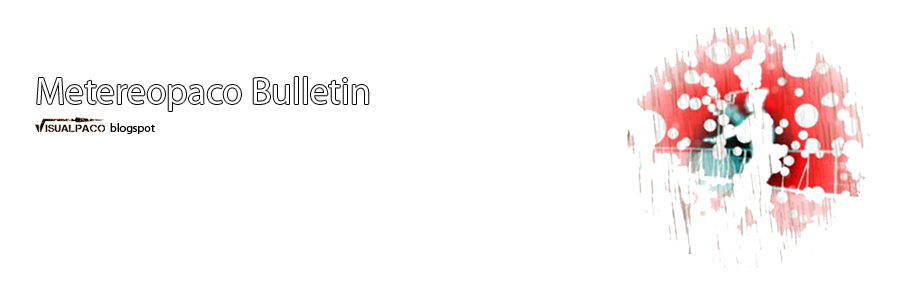----------begin_max5_patcher----------
7624.3oc6c80biiaj+4Y+Tvx09nOU3+jHOb0NatTWRU6lJU1jm1M0TzRbr4N
RhNTzdmYSkptOK2Gs6SxAhFRlRlTB.jBhxKmj0yPYY4F+PiFc23G59e8Uu6l
6J9b1lah9cQ+Xz6d2+5qd26zuT8K7Nyyu6lUoed9xzM521M28TUUw5atE9VO
lVM+g702+gxr4UvGCgSlgtMRJp+JAs8qQ+CyOx5mVkudYVk9iCadw7E5O7h6
94+CbL5lWdqEOUc36Edopu7XF7K7l6RWe+MQ+i5u6+9q9p5ubqkClUYa1jde
11eeUYeVOHtoLaSV01W8iEqq1j+q5ea35wV2CcVR8vESo0+EkoeHoqwNokwt
Pz7255zU5eq27GyV9bVU97zn+b1SYQ+8kUkoeW98OTE8mpRWlO2Q.yOvZdwp
UYqqdEX8C+s2+W+asAV5I+NAKoFjRh0eUqlPwtnlHX1.UeawxEG.Rer796.Q
.MKgDy33aa8ecfzz.XQMff4EKKJs9ia.g8n2O6OMKBqPtVUTSdA6q0lWWkVk
WrtA9yIb8ZShd4JoF7U+USs01lz.MblV0NQ9pejVm0ZJ.ctnWNDyl7jDB61V
+W9LadpOtAb17uUDkNuJ+4zprnpGxh17kMUYqhlWrdsB7ide4hmxWWD8bdZz
e+G91npB86R8o83SUYk2FU7X15n2emZLUrN56xeNK5mt46yVVrHWCckoKylk
tbyOcSzikE+r5i71n4JT7SQp2d8mzZ86Q8WU+RQ4mhRuq34rYylsUNWlqDih
mVqE131Tr16cPNgoy10HwwZ0JgPqQx3fUT9w0HoH86FiAqsbskDLJdPTJswZ
7qUD0qj16Kto401OuGpZqy9E0n3UZZUQ249NawRXiMMHSXtuotf1JT99x7zk
Aa69ph6ue4tIL0Bgph5O2cRy2y9tY2sLc9m19VtqnbQV4dFEvHrTnMriIXtP
p+WwDNSt+L87Gxl+orEGNshlIPTIgT+uNP2nEXGiAqyb8OKkr8qNf63cik68
ZbX4jRd8BeuzReZ0cYktqQxf8f3ZESgzcMRtzUMRxwF721GESeAArfK.T..C
O71lkLdfgSGaAVOQKS7M1BVbvL1zg42MYKijRjGAW.J4B8thrSnv2RrELxfM
QqAka8MNhN.lxn6xp+Xc1P.3.f.7Y33vBpEXAMXaLMnvg1WprxHj5+gQHOTX
nnc9mW6QD93PCuM+ebEZXmvzv1+y+cKZGrVVjtnNVdOrfR4fNiFd.OOczyFx
3TApOXBXZkSDdCJiqUUOmVtSFdRlHTqmnL1qfLEVT4ytvbXCIrNWFLgG9h37
JMZmv01kY69sqBzopnz78USMyj69VaReNawGThfZr7g5AetZKXHefuaGvVOl
KUhjxZzGT9JqhwTaJU+8zyJC3bCJAqmahGr4FlDbzl38bSRvlaTlpIx5+Lpl
fZrCMDfuGKPnlDipmDhcdSZU.JiSira7GRLI6.Yk+bspXxcESPC4.2Ou0vHg
dMHlgrQWn0wM6BNt80KU0rkIRdhmNppVDM98TkJPdgMf+FPvrRl6dpxIibWU
2aWNNiVuKGGMX6xECgEhiS7caNlLTay0L6RiNGPjTsygurVq+SMfyzXHEpd4
ABZZpQM0PU6YTO0HFroFQrnuSM3eqN0zXGwGKV9EOPeoYyeXuPFx8cDYiVuB
8DRHPxHvPf2LOB7lcQcJbd5xrHzLkxJu9uPy3doW.FLgnEvnS3pjnETHYjpW
rLeQVDOxCTgff3ELbKgeBPg9ZPId3xS0GWVjVMVPFrJdY.YDdhLx2rHCbtgI
bOAFk8nQLxTFceYV1ZeVKQz67HisIz6113gNROz.UzoKavHAGPDfGVPnWLrG
HBdrhHkYK7ZoCjdF7VNn3Lfvtv.hZAm5yu0gtZ6Ykogj3SO9UQuXiFQadhPG
tCVFrczqiVtWngZ4gAMXdiFx2PnA3XZOPC2Oz0QLZfP8EMviIznCCoOl9oHM
Ah.G6g+u2VW.e0vlyMCIcOieLx0s80XTCDvKsF5UfVyOmWM69kyVUrHaYz7p
OG8MuRGJ5aVVyj8Z7ARSQDN5a1rpnnRiYJIp9k7EmSDPRFjvF4RO.Z9fgyJz
3CqRqJy+7Pwdl8RPFIQVmfLAenRPFAArBmAmYiOIHiHBUBxThEmegSQ1ADLs
sTNBdRPdgpdN6IgqTXanIaSsK0qW3EcEMtSxIZC9.Auczs5KcJ+55JC0wAeY
gIpXvyAhfan2K2laMzC4KVj0Ey0EwiWNIAjGrePEqQvYmd0ywgpjQ.wz6lp9
QK81uTyoZP1c2pbzRiPNtILZ5iOprCEoLsq8QXi2tHHAiR.+Zk9rI2EOcPcy
ebqVUAJGfunTOnhBYm+YO75aQULhmjbaq+qlGpU2P2A2bgDg5Ow215+p6atv
VcSk5h9XJzavLSd13xdW6SrHeUzWiU++dNaQAFqB2+A2tjojwUnSM8gE9N+H
8e3edq.9TkX9K6zkUuT9JkDo0IZysCB8pQAWgzaGK3ciEK05Gf.A6Ru+yeLc
QVOT6MSrbfubvCNp1yFmNEUGi75h7MpnbIQ5Y.JQoyFQP9mdEP6mwZdq8byh
d7nJp2Sdyf1MlIflAe6WcXHmbwuaPGKxJa7jAr2YniN2ibcPjWP5CTuPPaln
udxAgWJXNeGovzwbxdFXdVHDPJHow9xyBxnk+M+5iEa74pjA4kv37.280O3K
45mG8dXGCDDv66uxvR3llRZV4gor6i4KydNqby92a+5jA9REn4k6Drvvy7jF
imZGtVVTe6rajko2cyhrO5xmQcEW3k2OBtb2M9x9uy70GVvAZ96M8okUen8I
r8+9eLcdVm+vsh6u6l6KyWTrtVH16mr9k29q6GaYCSy6Xc5is7CWUTr7tzxm
y2jaxZ5t4Akpapxa5zprp7Ul5.ytet7UOVlC0HhcuFj40G1LurX4x89nfuyy
s7cVj8b97reIeQ0C64z9AEznF5M6snZuW+fEWfF4VzqqkLPfEFFLx290cXWW
qZd0Jma1+G30EGBnXBXpZH0+X2r8kgLT+tsFN7Yrtmgj11iolm5QB0+o1kgM
i07c1g5ZG.lotb.m+Bl7JSqcteSmYk53la51jyQ2+Yfv08NGfNqoFjFD560m
Df85PXpmC5WNYfyu9z+YsZj+5OIvAFCm09qOtzN8t60fE9rn+DRn7dksU+QR
H8QXXy9WGZnCHI5JXkndXbpEhz5ibwP.cKrkiZGP1QiTOFwNXq+k8mqK4Rcr
UmdTV+8aGh1T7T47s+52J6Q6OjWjsoJe8N2U9wFy5Q38dmub9JMQlU4KdrPs
rvHgVNqdFEb7qdmWRAuM4oKImNxjbjkRd8d0iJAm5jV93QxaAH6PvGPw17hJ
42IJUzZXJdEayQhowhvdNUXUpP.uKcoIHyceF2L32OJeSFAkZRFAy6jQPuBS
FAEHWJm68cxCSlRFwTxHlRFwTxHlRFwTxHlRFwTxHlRFwUUxHtHQ67a4vKuh
in+ZMIJWs4s5BkovojQbQSFAAJBn7Dr2Ii.eElLBhvTsMvdmLBzTxHlRFwTx
HlRFwTxHlRFwTxHlRFwTxHlXFwTDlSLiXJ0USLiXJYD9DUNFb4gGG6axHPWi
WSCLTi93LeulFR4TtHlxEwTtHlxEwTtHlxEwTtHlxEwTtHlHFwTzkSDiXhXD
SDiXJWDdETtodDEy8LWDxjqwTQXF0lV2iGohHdLkJBnFLSQ8IUDm9yXJUDSo
hXJUDSohXJUDSohXJUDSohXhVDSwWNQKhIZQLQKheilJhtJUxnY6WOE2JLxi
FRNkjznL1aZiDbGJ9owiz9K+5hpL0ugne5lOVVrJ56S+72+C+kH7OcSG8DyS
WnXEBdM5Hg5DK9T8gjV5LlhK4sYYU5mxpAk55EMds2Xf1AYIjIGIycHfO78e
pguIg1sxCySfiSzd+YpG49n7vkW6JObHOWRnlA6ixCZbo7n6xtk2bxkKBHeD
P1d0MuMqMux2kxy5tgVSymVNPMsjhgtcN8qqReTEKCRoJWm1lnF0Ac6SHrPn
27QvgTT.8WWmZne7KdO69j5.Fs99nCvuNzADdnBvgTCrSE.4tJvktbhuuFv1
gME5vmcW9rgNHM0bXHlNSgzgSCgSuzcIniWevgZwko+.wbuaRvYCl09d2Wd5
t2y7X57Be67.bbixUlOcySLe71QbaoA8D6cC5QfX8DoDuY5cvXNbs56AXDek
z5fKKpRUuvW90i26fO9oNygFUPLz0fIjiiWr1vqwUO.Zu12Jpt6shXHxP09V
wBvOLbr2ku.TRnZeqMarUWll25QlZXRodpYv5rtX91NJOw6ol3ooF0TizrpI
Y3lZXn9N0H9s5TSClE8wmVtbybel.nPNUDlZNCw8tDLxYuoP8kCQuPkGeYPz
o9Dl3OzaS9Cs87aa6j6++9e9ei.tgrc8TV15nmySi9C+vuO5SYeo4OU84CMu
3IXzR557922szNSnC3ik4XDfjDWS7DmIahva5SfFvS0+TXr14WEBD8K4qWT7
KmKTkf.VoPw0vJW3OphFCn59Gf09n5ND8qw2zOPCm.5hBcd2gt5WyN+o0DPg
SeqvDrsPBUCI8fJXb1Xg9RGUW5ESe8VaxvqPkZjB4hE9qLweqnLYPDJqu5Rh
q.pvU2iQAa7Qyq9bz2rH6wpGt6oO9wrxnAR0JQn2yTP7GIi8U2hbLbVmXmaG
ZcriQI3rkQj39Z9GnvIFo0O6ASN2cBSW4npxqumdbXTUQ.QFEmFS6fBibuIW
M6TVDtss+pCdGcFH3H2VpeUuX0GJTgkwZ6DIZ8Ztb2CmIJgUug0Yc.ctjaao
xV85aejaCzSzSGxjsGf8KOfvPPPv6q9oy0PMw1gpvScNyXvD+wKObtFPBaGP
7wkNGyV4lNwexK2U47jL1fBTSpGL1P41w3jxFcSrMpmmFIUpS1ijh8kXaXD4
ZmYaFMF+Y1lxmpqAdQ9JVegP9z33Y8j0WpcSuvGH69YF7fqynGULdMhnzxzI
vG4wYGgtn2G7x6uadwxhRetT3wPcXCqG0wty+KY3O0FJBhmj2qStwlOkoSu4
s4o2X0MhdVsoVMuWvy7+hXJ.FVJk89JQeEj5x.hqL.Qkh9hq72H2uUAF2fPZ
9eAWYA49sdNQBl.+Bod6ARPu5QBJvvUJumHA4pGIHlSCOomHAdTiDGy9az80
mEm+FbAmjwftDG684jDSGCmB9I2ohWuGEFM.6TY.NH3z9rSUL4J2Efn6V9TO
poETgotxjzv7tOpf9WcYBkJXToJzEuApsLM.hsmF6OPkbUrVc37pjt8L1P81
c832B9qSzHKe.P1s5jHRuQ12Jdry3ynp+vX+FurzXawcQLtNiS70oX2h3bUT
WWjWopI1J1wjqRs6QlXGaMbekVAkGY3s8qJGWjEPXKwZDIWma5vuJMBNxDaq
oS13hHLWml.sk9NhwkgjKg2TSjNZnIcDQnYWmPR7kzQrqNNGQ7jtMDNPzRNy
WNGkjbsS4Hi9hDJtAdP4HI9ZjwQ9TigH.qR5QMFBiGmE4PsUkHdGkzvSw6FV
iJzLm69ZngqaLL75M8BYfCsDKP9hLh2nHivTUuQReQF9X.Y5tDphPTeJhpvc
x0TcNXjCY4zoKhp7Kr8kifHLh6.BAXxHOY2M.2U.4RWT25tBMY0HWXZ0Mfab
wNPky3cVUendVPSqxsr+KIFwSRts0+UyZ5Q2X1c2u+GnP8m3aa8eg2WnawO.
kW9.eW0jiSdQpWVmX1.1byLaP8X1HYZ1X3lM.Ou5wrgbZ1XvlMvfwYAbdndL
ajfllMboX1kUltI6C5Q0txYWGUztSLyAw8JL75wTOxicHdlD7H0eihxpGJdo
bM3jOXnFfBz3rbxkiDxEFS1qrKbzwHZmCUGaL11RVWKYrCctfJ2iDfNETFzD
zvDfZsRmKuWwrwYL7kMIklKHRBj5GLNwl5.ZaHBdrhHuP9L2hNUu1Og2fxwN
gGnwbVdvQXepJdRZ+xkgXTjKiSVZgY9WZggBCKAnGqGkSWA6ppHLS7GoLEFV
ouEdXl3ZBo7t7Lmv6ILEeUoPg8VghaJ68diTB5URgrFHy5QKh01fWlit.7wU
l3bkrlwGq636YGklA2CD3nLXTm2xmQGUMOBsRn5S9wmpZ96ZKXvlQO5V8F6N
7F4n2oH5EjKbtUsYQ.ybGwI916zYx2NsB.FT1M1BFtaAkid6.FzDYOACxaGv
HA0S2ZoWUNq8iBu8BIVv5IRcc4uF2ejhf6IRkbk3ulUYo0pXlfSfhPRZrorS
bOggGsGEpU.fD2..7IZnqEcFkGr40btr25La2GCZfVXL18NVCYjle+xrzEQ2
UlludVCXzY.BxiEbLHI3CqFymLU+RzHEddrX4W9PM6Mi9ZbGmBhM3CAVlAAH
JicFeRji9iBwLDi2UDZczphTDpSBoqREldKleWzeM5+N5aiduuS0XfyQ7lo9
1IffDj1JaWJ7yU+9JSipY1IyaH.3WDKoYa9xo9q4H8bPpq532ubVY15EYkPg
Gu0yPF68NMXfoildlCASc2itgKX5CJI1CJFpz+d.PvUoUk4eFxwRz2rYUQQ0
CeXyCoKp65D3nuYY98OT2AJL84nH+MBC4ofBVgowmngDIaYW7gCaUvvGfQ9Y
CgU6ZsrMH9UtR2BFuchn90TZA8B1MNOAUmKVr6aMP3iJXuKSmKxW0OuDnlBB
CzZVEt6FEI9Ra2r6VSqCieniPxcWQIY7zeZ6GRfA9KCEHCO.BxHBIpMG8wG2
b+S4diFBiWT.Ed2U.yreOwg6l0L3VqqhtCHhVzc8zoAbh4V03tOCjAqQGt0m
A8P5rDYes9z+7tzkK6KbYpuqwtCWzwq5z+bUVUYgZ7zWzAHyl3DNf1xlPzgi
VW8P24jWuSSySnO0T9WzCtVtem96DmDpo7de+Nkzq862oQgQBYL1m62IaTc+
N2eExVfPW3zN1U2DpcbTSuNGnKRsG91el1Wfiw21QGFr20iQGeDO5nPlY6wn
ibIy9xfzqCTAYzydc.gMpXnh0S9n9tv8EeJtTwPdzYVp4bsL4Yf4dPSzqhvG
ONHXxXH.BBo6f.45GDHTRCPvmvmwW+f.Vf6GHfEiHPnCVJp9MkE89nuM52G8
eE8G7PSAx3DwzMhEdDKnqfj3ngBd3+MnGIdzhr40Ap3Q85XFp9OI0fC7uw0w
N4tREcPOn2911XDF1O.4Yy21FiMeJSsMley01Xpi8dyWVcWwR+KQxRdC5cE6
e4MmPutK8z+5xn6UF6eLRv5KXhABJGi7tADSHmkFPbvaoyXUHTT+gy8pK5bo
+5lHegSpM8y4f2WmyqJR6sRJjORa5nyzN5JIxyxJ9AuGuaSUQGzz5cAQmjzq
Ac.ZVKvu4arZOgDq6fOcstSdjd0vEu.vqLJDQrnHZRFWE+XsbiuBkaaKGu3w
UIfGaaWEmLtprsDaaQ3ZEpQjbaa8OlLUbaubE21NKlKO5Sk9fffNpHjUMp6r
WFyFor6d9xhM9TnO.1YtEPjtCHzwI+V0gaGsIqob3VVhTaZaXulvidl7k7Hh
AZS36n1PlDN1Y5RDOBXKQm29Ac5Wbe8ANt45ClyqOFoEFHXgQTZjT3yQO1HK
p3XfZ7te9LC9ISLrZL6wz3u1m5iiHAN7F39SHwdXb8ReWqdLed07pxWpbdoy
+Tc5qVun4urlo3cufcoM3eEtd61XjTJqeIZCXX9x75zRmupdZn4GaK8AXHaB
v8Nhrk7Nmj.kGlC5VOincDM8kK0Zd4pzHEfL6w5LuDl6zSufbrofCAVuYfEc
FJwOzFtWkvRa3SjiOETWUpj27Zy2NA+TdmDPa6rw5rmJKVmEx4htteUee1xh
E4oQ+YkHktbO+t15vMtE6ETwN6ENNqBtsB1SL0kDdSasssTAtBiFWYLEMYzf
rRo8KwveLa4yYU4y0vxKXR482YFE5wPyuzQk0D0.taTnNa6muwbp9Ca+D2.S
wGFXnYh90AfGuW.pck0.wdMEkWGJX6gA9JEOakJFwFg5.Q+bKTXVrMREKrBk
MxzAv4nPlvbYXUorROONr.0AKq5PnBpLQ4Voj6HPQ08WFSqFm1nsiSavyI0N
ub3gfLFDzwGvFV8OpMqIbDkTa2y2x0DvUJBlUOupep2KXvVHwRQfWEaiPQC7
9BGnc20Z.GMtjnWhZtdaFFyr+SFlKBYUauGvPV2L7vu9odNFIVsLOrayfsVl
v1KS3DkuvJLiJ1lXF5LAY6KzaI1JmsXIiOSS3v5.HwNYxwkTTrdt0rHggo6d
puSrHrUxaXMLYy5CRXEoC900ANQCq6B1rnj63FcTIpgpVcwhcfT0313GKmGT
.zJWqCqu0XaVPxBsiB1noICbn1BaL0FSC7V6I6sscWpT7.KUwVIUg0mXqBrU
D1zRvrwiXWSzElIz1TwX3XxXlyW+fGYaOkQh9MyFB21ry.WfyngcNSF3sBnV
sAOOvFd4VEgFOv4tKwJegBav.wjQnPgYRKL7RC85OjMBUfQp55A2IEJQfc52
p.0oNZnBSj5LjPgpHHVhv6dr25aVYvOrVVSjVk6fvJTRzY.nvTACxakbuc12
+QSmYca9Zn8eVGyNGCFNjzASq6FKfT3cviPE1a6fIlL.pvjwmJrcatvBb.PT
aBULNr9FHsCoBbL0VkoPYf8hxNONIANTQpcVqqwJV.8iBYsTQCnTgsVpHAbF
LwZoBGNoxNeoBqSmL9YYeSnPZYt8VXAvCzCeTZnLqgLRG7n4TyLaqper2S.m
EGd.WYI.U3vBAbZtG7XnGq1oqQR5oe6Lf6yCge6Ta7am53wThwIP8uyvUarg
7D3AHyRDaTmDtJvwIH.gMjlNIY2i8VfsJSJA9TkvjXqivLb1pEV4B.wwrVrc
1jAWiB8xmsONDBLdvE356894QfOz1y.Iw8VpXmk7cHEZfiSnMy2g9w9NwaCL
J5BEwmITzJuBIgMZCgUFZH3fBUIVcP+g8ToHVsSrqm.jPn8IDCNDgiQlhQ09
OZJLDIXfIjRd+Y4nMqn4gMZ7D7YvWm9JS13cPRXWxFaEYPicNEkbsSfPMcAS
QrcO1W4UbFj29JS1X1SqPxbACMfFYaAFkt6w9JuI1JuTWBbQH1SdgZNyfHuR
akWhKxKDA8N4EmLT3aBxV40EpWhkjlxKFtQiCg7Z044nSiQ3R6kUWwEsLEtj
dYESlYgMLJtU4rLrIGzNpWD1TCxj1JSgSG2Je3C8UHvFW4Bqux1nMQB7ohYi
ykg9RAN72fKBlCATnibnwEpQ+J8NcjCu.iiwmOANdzcE4NCS4J23NeHnc2Dn
vxHOKRpGAGbQhbJQhDbQhdJQJvWKAaTlB8gsaiLICL8xRr8NAhGWzfMvWyEJ
Y7kvHJwFNT57A1wwv0fE27.6zO1WG+6UR2vcIuLSfuz8NfwAHy9VsdkRB+b9
oL+SCbxTswTaXy4lzl.URBbkcvFyZx.yJMjMd3fQAlnNHqbED43ROFRmiTIb
c+quiKHyS8VdsxUaTfuGXX6t4MrvRXM6p5JZoJfDVyt6CONrNBws5jynA2We
1oDo.eUssYtSD17svsQKWD3aZrM24FtLr77wlDT6ZIXhSkMLzygK03AOwf6V
NbQHzO02QhUZgNt8dcIUTORfSKyTfEqeZHjVrMRa3zEjLKjIIM7xDxFYJfN2
ZSbTINxrTRLFVI.s+BQ7tmFBoEaizFPqN1DMOKrgGX00rk63rJimznRZTy66
gpRZXSPe73QWIaQxCJ6xD1JR3fIRDaEIh8hjofsvARcPgTGs+SBnrZQf8cO3
Inx+SfhQf9o9h61X1lE1s2r5NwvvAMtGZrsxT3hPzp6g.CGzK+kUUe1j.egP
sQGOIrmWVrUtlDX92QOKbXDJUnbyUphB2u5Cd7LvvQq1jKvIa0FiHxjQWU0R
FVG7jVwwHjbDVq.CbAL7veecIU3QWktCiC7YJa2UpDSGegxfC7EsEaWICJz0
gUpc29Nx36RIS54kR1bUV0OFhKVLomWrXRiG6qoj3yh7BEvZbBso7peLDmDt
yxq4n5MMoncxab+uZvVUtebVdIbcTtlbisSeX.pswVUIfH9VIfLE0OZ7d03O
yiDLZuQCFEnZADw2ZAj4ljuqBFF2VELLXCVqp+FNOVEBw4xTI8bXqr2BkcUK
g.6FpcNGSbkgUau7wIlN5HOd2i8lHBBaNVm.yCAjMU9UVfum4HaJRtr.e8JH
BqJh.gc9SXWo1rOyepG92e0+ObKJetA
-----------end_max5_patcher-----------
























